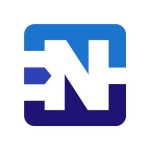What is our primary use case?
We use it in my company and for my clients as well. We sell Internet access, so we use them as a firewall to hopefully protect our clients. We work with one of our partners, who is a certified WatchGuard engineer, and have come up with a fairly good plan to get these completely fired up and working. That makes a huge difference.
We're now up to the 7 Series. We've gone through WatchGuard 3 Series, 5 Series, and 6 Series. So, we've gone through several different versions over the years.
How has it helped my organization?
Firebox's reporting and management features have been very helpful to us. Unfortunately, we don't always have them turned on at the right time. That's something we have to be aware of. However, once they're turned on, they seem to do really well in identifying things across the board for us. We can usually hunt down problems very quickly and go from there.
The solution provides our business with layered security.
We do most of our services now as Voice over IP services. We do not do computer services. We have been able to slowly pair down exactly what we need to program within Firebox to give us the best quality of service for our customers.
What is most valuable?
We can open or close individual ports, which most can, but I like the way that this programs. Meaning its GUI interface versus Cisco's, where their interface is still not all that great. We just become very comfortable with WatchGuard over the years because we know what to do with them.
We have found it to be very usable and friendly. We can use it for identifying and hunting down. If we run into a problem for some reason, the reporting capability makes it much easier for us to ID where problems may be.
Depending on what specific model you get, along with how deeply reprogrammed and restrictive we make it, their throughput is pretty good. Though, the models are all pretty close to the same. We get about an 85 to 90 percent throughput, depending on which of their security platforms we install. Some will take a little bit more and some will take a little less.
What needs improvement?
The pricing could be improved. It is definitely one of the more expensive products, though you can't really compare it to Ubiquiti or SonicWall.
For how long have I used the solution?
What do I think about the stability of the solution?
Its stability and reliability make it a good product for us.
Over the last 15 years, there has been only one Firebox in which we've had any hardware problems and one box in which we have had a software problem. In both cases, WatchGuard overnighted a new box to us so we had it the next day, then we were able to repair or replace, as necessary.
They seem to be fairly stable. Like anything else, it's an electronic device that can last for 10 minutes or 10 years.
What do I think about the scalability of the solution?
They have put together a good process where we can go in and see, based on the processor power of Firebox, which one we would want to use on what circuit size. They have it from very small to extremely large.
We have four telephone technicians in the company who have had the training and capability to work on Firebox.
For us, a large environment is somebody with 250 or 300 users inside the company.
How are customer service and technical support?
Our partner has used their support. It's really good support. If they don't answer immediately, they get back to you very quickly, usually in less than an hour.
Which solution did I use previously and why did I switch?
We see cases where several of our clients are switching from a different firewall to WatchGuard. With Cisco, it depends on who's supporting it. SonicWall seems to give us a bit more problems when it comes to interfacing with IP telephone devices or if we're doing SIP trunking.
How was the initial setup?
Firebox stabilizes it so we know we get better support for the platform and user when it comes to Voice over IP. We find a lot of them don't give us the ease of setting it up. Now that we know we have it down to what we're doing so the platform stays stable, we can imply good quality of service for the customer and keep going on so they continually get good performance on their network.
In the beginning to set this solution up, it takes four to six hours. That is to get a brand new one out of the box and make sure it's got all the latest and greatest revisions on it, then setting it up. That also depends on the size of the client that you are supporting with it.
We have a template built for it. Once we upload the template, we go in and adjust it accordingly.
We have a few Fireboxes deployed to distributed locations, not a lot. However, it does work well in a distributed environment. We have one customer who has five offices in five different states. He has Firebox for all of them and it seems to work pretty well.
Deploying to distributed locations is easy enough. We have a template. We just get the IP addresses for the network and update the template, so it has the appropriate addresses. We can either have one of their folks do it because this happens to be a tech company, not necessarily IT. However, a tech company is knowledgeable enough. We can send it out there and tell them what to plug in where and turn it on. Then, if we're really lucky, it comes up without any problems at all because we've already set it all up before we take it out to them. So, the deployment becomes easy depending on how you want to address it. There have been times where we've gone out to deploy them in different locations. Most of the time, depending on the company, we can set it up to deploy, then just plug and play.
What about the implementation team?
Make sure you have a good, qualified, trained engineer to help you initially get it set up. I do not recommend you doing it on your own unless you're somewhat trained in the terminology and capabilities of the particular product.
We have an engineering specialist, who has been certified by WatchGuard, secure attack vectors for us.
Once we get done putting the solution in and getting it set, there are times that the local IT support may be different from ours. They may go in and make a few minor tweaks to it. We try to keep that to a minimum because it is just one of those situations where we would like not to have too many hands in the pot.
What was our ROI?
It saves us time in the respect that we now have the template built for it so we can get in and get it done. We've had much less problem supporting Voice over IP technologies from different companies. Because our client base has grown over the years, we're probably saving 20 to 30 man-hours a month now that we've got this on a good stable level.
What's my experience with pricing, setup cost, and licensing?
They license it. When we buy it, we buy it with a three-year license. That's the most cost-effective way to do it. So, if you're going to buy it, then buy it with the three-year licensing. Only the person buying it can determine which level of licenses they have. That's something to truly consider.
There are no additional costs unless you choose their advanced licenses or different levels that they have for security. You can add on more security licenses with what you have in Microsoft today, but we have not been adding those on.
Which other solutions did I evaluate?
Our experience has been that Firebox actually performs a little better than some of its competitors as far as throughput goes. However, it depends on how much of their security software you get loaded, because they have different versions.
We have used other products. We've used SonicWall, Ubiquiti, and Cisco PIX. My personal favorite happens to be WatchGuard. Also, if we compare WatchGuard against Ubiquiti or Cisco PIX Firewalls, its ability to add multiple IP addresses and ports is much simpler than those. I can run several different networks off of ports that come on the hardware device. Depending on the model, there are anywhere from four to eight ports on the device, so you can plug it in at different levels.
What other advice do I have?
It is a great piece of hardware.
The learning curve for this solution depends on your background. If you have some technology background, implementing it will probably be okay. They have a WatchGuard academy. If you have no background at all, I wouldn't suggest you do it. In comparison, when you get trained with Cisco, there are several different classes to go through and each class is several hours long.
I would rate it as a nine or nine point five out of 10.
Disclosure: My company has a business relationship with this vendor other than being a customer. Reseller.













